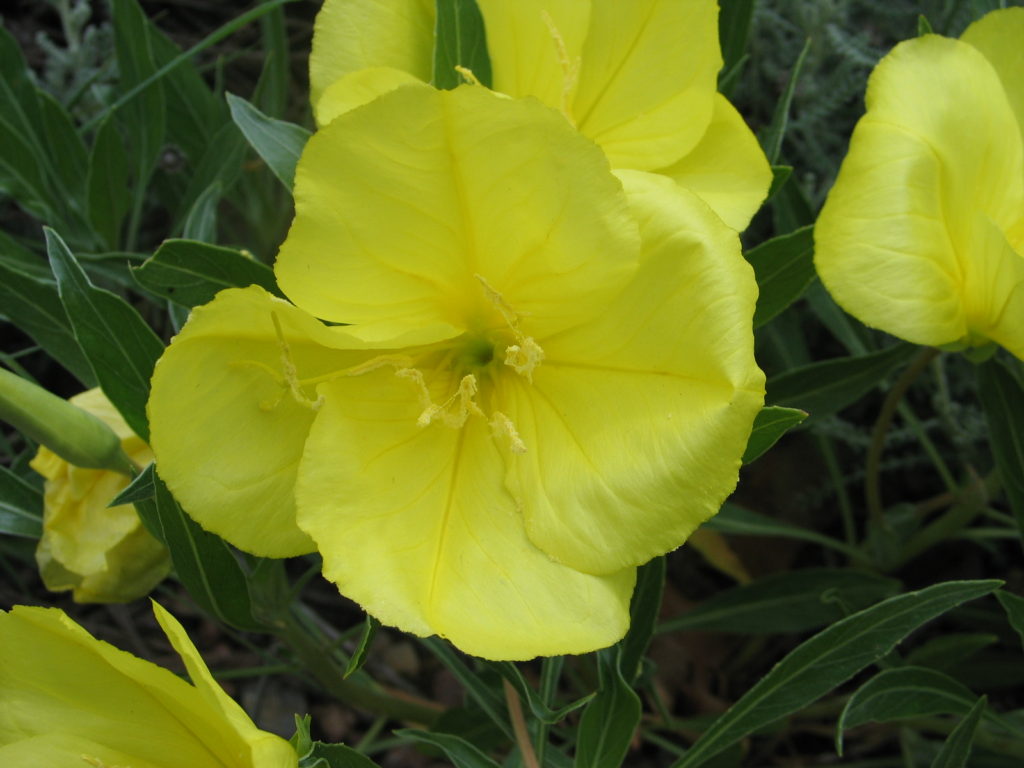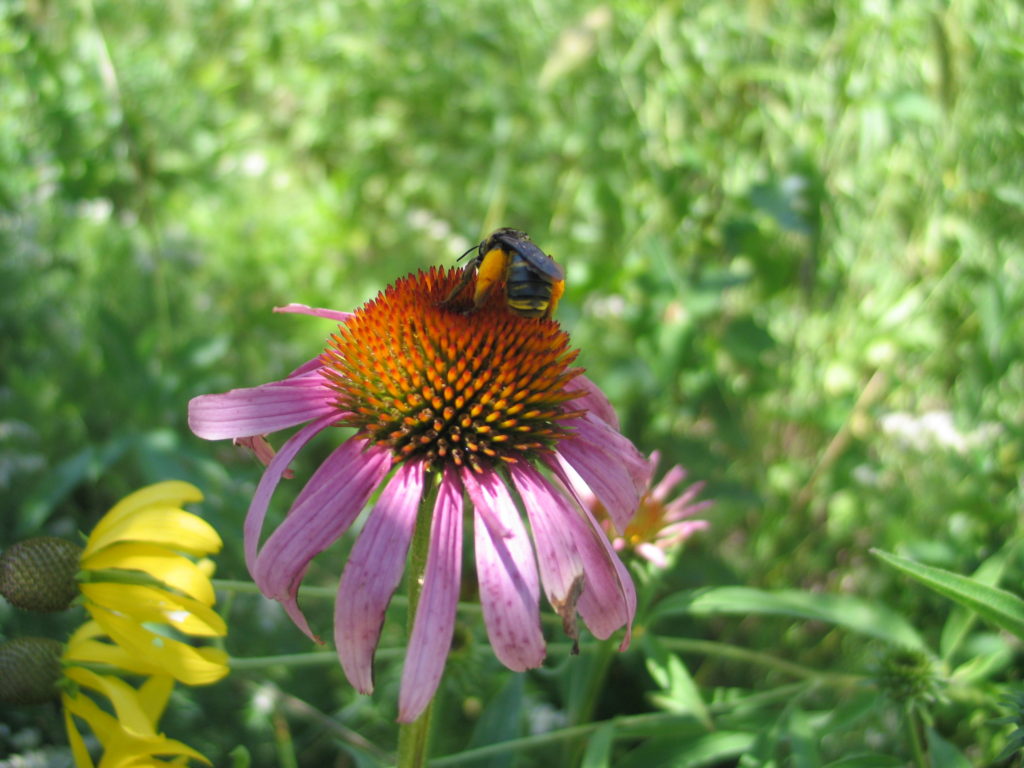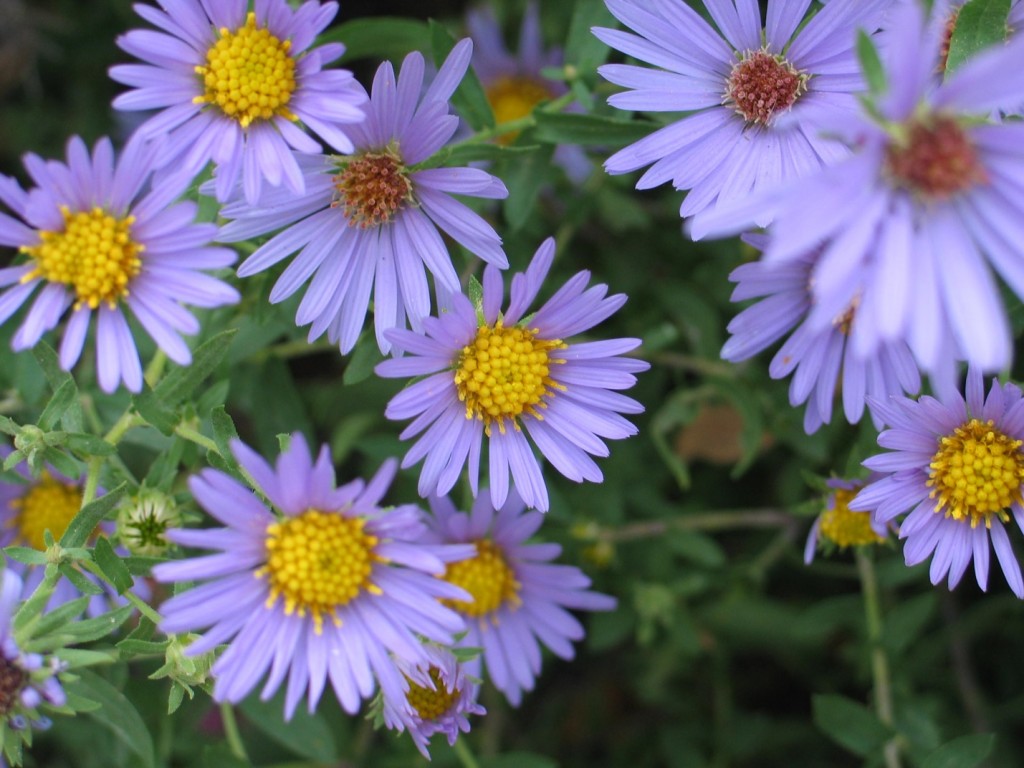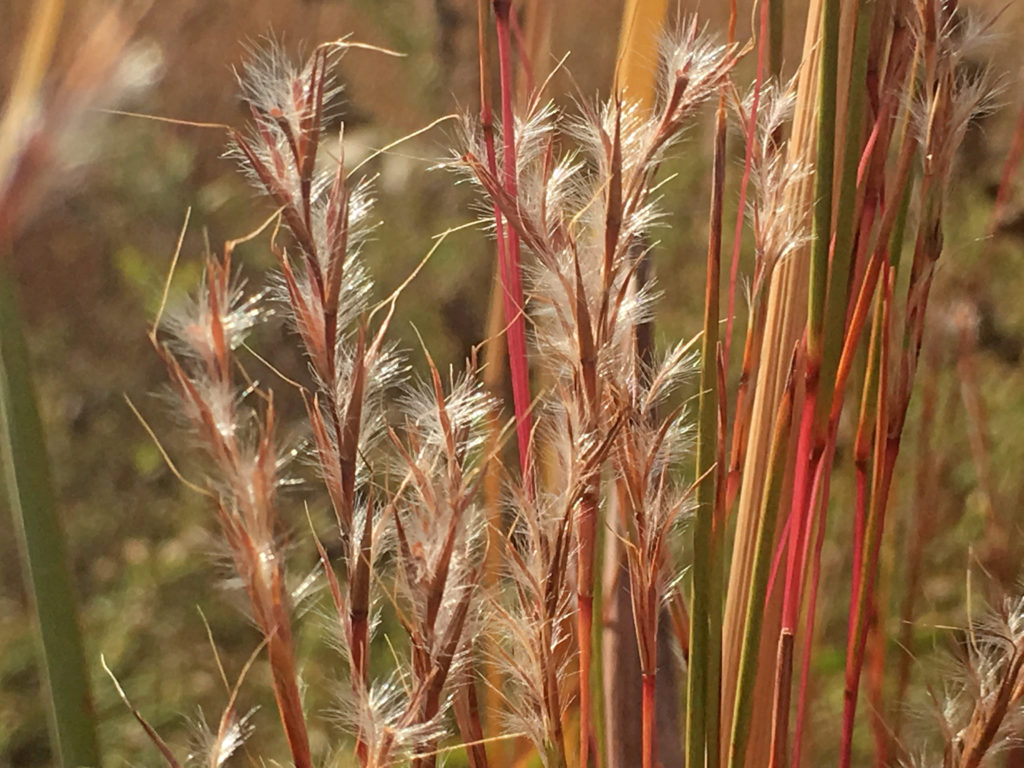Many people ask for prairie plants that bloom continually from spring through fall. There are no such plants growing in the prairie. Prairies rather have seasons; each time you look at them, something has changed. If you think about it, there are always plants coming into bloom and others going out of bloom throughout the year. “Petunias” don’t exist in the prairie, so to integrate wildflowers into the landscape, you must mix bloom times and plant heights.
This list, ordered according to bloom time, will be a starting point as you think about establishing a prairie garden with continuous bloom.
SPRING
Missouri Evening Primrose (Oenothera macrocarpa) is a popular landscape plant with large yellow flowers from May-June and maybe again later in September atop waxy green foliage. It stands 8-10 inches and likes a sunny location. Dwarf blue false indigo (Baptisia australis var. minor) can be found in pastures and prairie remnants throughout the state. It is usually less than 24 inches tall and its beautiful light blue to lavender flower spikes can be seen above the emerging prairie grasses in May and June. The foliage is unique with its waxy blue green leaves which eventually dries to an intriguing black color in fall. Dwarf blue false indigo thrives in full sun, tolerates clay heavy soil,and needs little supplemental watering throughout the summer months. Other spring wildflowers include purple poppy mallow, penstemon, amsonia, shooting star, yarrows and golden alexanders.

SUMMER
Coneflowers (Echinacea sp.) can be seen throughout the state during the early summer months. Purple coneflower (Echinacea purpurea) is a butterfly magnet. Whether it be the true species or one of the many new cultivars, purple coneflowers cannot be beat for their adaptability to sun or light shade, and the mid to late summer color they provide. Purple coneflowers prefer moist, but well drained soil. Pale coneflower (Echinacea pallida) can be seen throughout the Flint Hills and tallgrass prairies of eastern Kansas. Growing to three feet tall, pale coneflower is a drought tolerant and heat resistant addition to the garden. Make sure it gets full sun in a well-drained soil. The slender pale purple ray flowers (hence the name) in June and early July are sure to brighten up any perennial garden. Narrowleaf coneflower (Echinacea angustifolia) is shorter than pale coneflower. It averages 16 inches to 18 inches with short, wide, pink ray petals that bloom in late May and early June in south-central Kansas. Its range is the tallgrass and mixed-grass prairies of the central Great Plains.
Butterfly Milkweed (Asclepias tuberosa) is perhaps the most recognizable prairie plant. Its adaptability, vibrant colors and the lure of pollinating insects make it an excellent choice. Butterfly milkweed is a stout one to two foot tall perennial with a deep fibrous root system. Flowers range in color from the deepest reds in eastern Kansas to orange and even yellows further west in Kansas. It prefers full sun and good drainage and it will tolerate light shade. Once established, it is very drought tolerant. Several cultivated varieties have been developed including ‘Gay Butterflies’ and ‘Hello Yellow’.
Gayfeathers/BlazingStars (Liatris sp.) are true symbols of the prairie. There are seven species that are native to the state, all bloom during the late summer and early fall. Their upright spikes crowed with rose-purple flower heads add a vertical dimension to the last season landscape. Thickspike gayfeather, (Liatris pycnostachya) the past Kansas Native Plant Society wildflower of the year,found in the tallgrass prairie of eastern Kansas is the tallest ultimately reaching up to five feet. Rough gayfeather (L. aspera) is generally only about three feet tall and occurs in dry, rocky, tallgrass prairies and open woods in the eastern half of Kansas. Several other worth mentioning are L. muconata, L. ligulystylis, L. spicata, L. squarossa. Liatris spicata is the most common blazing star in the nursery trade but all would make a nice addition to any garden. Other summer bloomers are black-eyed susan, purple prairie clover, and other milkweeds.

FALL
Asters fill the gap between the relentless heat of summer and the frosty chills of autumn. They complete the cycle of bloom in the prairie. There are more than 30 different asters represented in the Great Plains. One of the showiest of the asters is New England aster (Aster novae-angliae). It reaches up to 6 feet in height and has pinkish purple or lavender ray flowers. It is found blooming in September and October in medium to moist tallgrass prairies. Other asters such as Aromatic asters ‘Raydon’s Favorite’ and ‘October Skies’ are wonderful late season bloomers. Another nice low growing aster is heath aster ‘Snow Flurry’. Include some goldenrod and Iron plants to add color options to the autumn garden.

WINTER
Little Bluestem (Schizachyrium scoparium) is one of the many prairie grasses that add winter interest to the landscape. Taller grasses like and big bluestem, swithgrass, indiangrass will provide texture and movement in the garden. These grasses are drought tolerant with deep roots systems that sustain them even through the harshest conditions. Look for switchgrass cultivars like ‘Cheyenne Sky’, ‘Northwind’ and ‘Totem Pole’

This is one of several design principles that are key to the success of any prairie garden. It is one of the easier design elements to incorporate. To learn more about using native plants in your landscape, join us for one or all of our native plant school classes in the new year.
